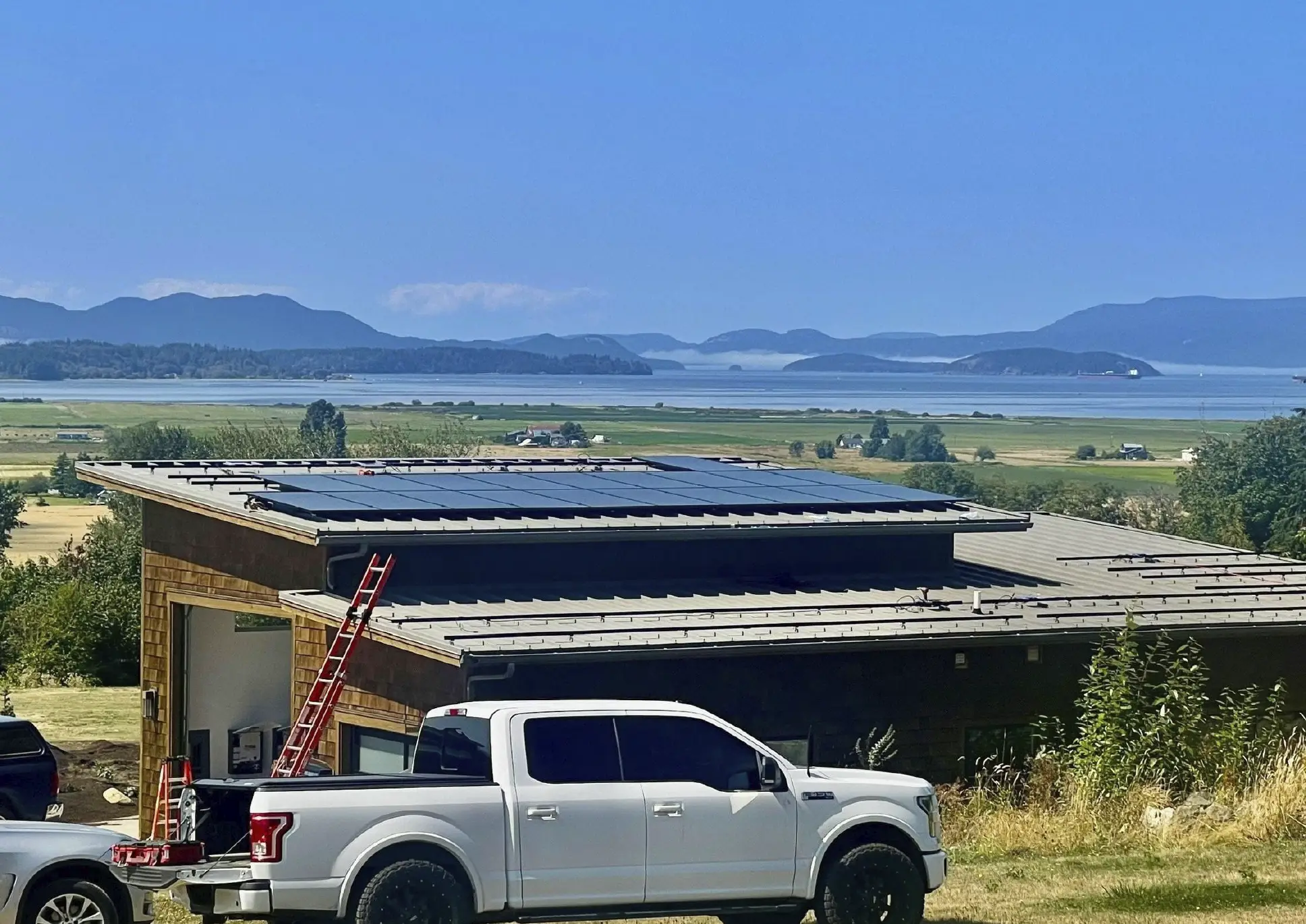Battery arbitrage and time-of-use (TOU) strategies both utilize battery storage to manage energy consumption and costs, but they serve different purposes and operate within different frameworks. In the Pacific Northwest (PNW) and the Puget Sound area, TOU rates are set by utility companies, where electricity costs vary depending on the time of day. Typically, rates are higher during peak demand periods and lower during off-peak times. Homeowners and businesses with battery storage systems can capitalize on these rate differences by charging their batteries during off-peak hours when electricity is cheaper and using the stored energy during peak hours to avoid higher costs. This approach not only helps in reducing electricity bills but also assists in balancing the grid by shifting energy demand away from peak times (Utility Dive).
On the other hand, battery arbitrage involves storing electricity when it is least expensive or when there is excess generation (such as during sunny or windy periods) and then selling or using this stored energy when electricity prices are higher. Unlike TOU, which is a consumer-focused strategy, arbitrage is often used by utilities, energy traders, and large industrial users who participate in wholesale electricity markets. In the PNW, which has a significant amount of renewable energy generation, particularly from hydroelectric and wind sources, battery arbitrage can be highly effective. It allows for the storage of excess renewable energy, which can then be deployed during periods of high demand or low generation, thereby maximizing financial returns and enhancing grid stability. This is particularly relevant in the Puget Sound and Greater Seattle area, where renewable energy integration is growing, and the ability to smooth out the variability of renewable sources through arbitrage is becoming increasingly valuable (Utility Dive).
([Utility Dive](https://www.utilitydive.com)).
It’s Important to Know the TOU is in a Pilot Program Phase in the Puget Sound Area
Currently, time-of-use (TOU) programs in the Puget Sound area are mostly in the pilot phase, with utilities such as Puget Sound Energy (PSE) testing these initiatives to manage energy demand more effectively. These programs vary electricity rates based on the time of day, encouraging customers to use energy during off-peak hours to reduce costs. However, it’s important to note that individuals with solar and battery systems are often excluded from these pilot programs due to the complexities of integrating distributed generation and storage. Despite this, there is an expectation that as the programs evolve and the technology improves, inclusivity for solar and battery owners will increase, allowing more residents to benefit from TOU rates in the near future (PSE | Time of Use).
Counties in the Puget Sound Area that are Participating in Time-of-Use Pilot Programs
1. Skagit County: Time-of-Use (TOU) rates are available through Puget Sound Energy (PSE). PSE has implemented a TOU rate plan as part of a pilot program aimed at encouraging customers to shift their electricity usage to off-peak periods to save on their monthly bills. Electricity prices are higher during peak demand hours (typically 7 a.m. to 10 a.m. and 5 p.m. to 8 p.m.) and lower during off-peak hours (such as nights and weekends). This initiative is designed to help manage grid demand and integrate more renewable energy sources into the grid effectively.
2. Island County: Currently, there are no specific TOU rates offered by Island County Public Utility District (PUD). However, some residents of Island County can benefit from the TOU rates provided by PSE, which serves parts of the county. PSE has implemented a TOU rate plan as part of a pilot program aimed at encouraging customers to shift their electricity usage to off-peak periods to save on their monthly bills.
3. Pierce County: PSE, which serves parts of Pierce County, has implemented TOU rate plans aimed at encouraging customers to shift their electricity usage to off-peak periods. This helps manage grid demand and allows customers to save on their electricity bills by using energy when it is less expensive. TOU rates involve higher prices during peak demand hours and lower rates during off-peak times.
4. King County: Time-of-use (TOU) rates are available in King County, provided by Seattle City Light. These TOU rates are designed to encourage customers to shift their electricity usage to off-peak periods to save on their energy bills. The rates vary depending on the time of day, with higher prices during peak demand hours and lower prices during off-peak times. This helps to manage grid demand and supports the integration of renewable energy sources.
5. Kitsap County: PSE, which serves parts of Kitsap County, provides TOU rate plans. These plans encourage customers to shift their electricity usage to off-peak periods to save on their energy bills. Under these plans, electricity prices are higher during peak demand hours and lower during off-peak times, helping to manage grid demand and integrate more renewable energy sources effectively.
6. Thurston County: Time-of-use (TOU) rates are available in Thurston County through PSE. PSE offers TOU rate plans designed to help manage electricity demand by encouraging customers to shift their energy use to off-peak times when rates are lower. This approach not only helps reduce electricity bills for customers but also supports the integration of renewable energy sources into the grid by balancing demand.
When Will TOU Move Out of a Pilot Program and Be Available for PNW
The Puget Sound Energy (PSE) Time-of-Use (TOU) pilot program, launched on October 1, 2023, is currently in a two-year testing phase to study the impacts of encouraging customers to shift their energy usage to off-peak periods. This program is expected to be expanded to more customers after the pilot phase is completed. However, at present, individuals with solar and battery systems are typically excluded from participating in these pilot programs due to the complexities involved in integrating distributed generation and storage.
Experts anticipate that as the TOU programs evolve and the technology improves, the inclusion of solar and battery system owners will increase, allowing a broader range of customers to benefit from TOU rates. This will help in balancing the grid demand more effectively and supporting the integration of renewable energy sources (PSE | Flex rewards).
How Energy Arbitrage Can Help Consumers in the Greater Seattle and Puget Sound Area: Optimizing Energy Costs and Grid Stability
1. Cost Savings
- By using battery storage systems, consumers can store electricity when prices are low (e.g., during off-peak hours or when there is excess generation from solar or wind energy) and use it when prices are high (e.g., during peak demand periods). This practice, known as energy arbitrage, helps reduce electricity bills by avoiding higher rates during peak times
2. Increased Efficiency
- Energy arbitrage improves the overall efficiency of energy use. It helps balance supply and demand on the grid, reducing the need for expensive and less efficient peaking power plants. This, in turn, can lead to lower energy costs for all consumers over time.
3. Enhanced Energy Security
- Battery storage systems provide backup power during outages, enhancing energy security for consumers. This is particularly valuable in regions prone to power interruptions due to weather or other factors, such as the Puget Sound area.
4. Environmental Benefits
- By shifting energy use to times when renewable energy generation is high, energy arbitrage supports the integration of renewable energy sources. This reduces reliance on fossil fuels, lowers greenhouse gas emissions, and contributes to a cleaner environment.
Conclusion
Understanding the differences between battery arbitrage and time-of-use (TOU) strategies is essential for consumers and businesses in the Pacific Northwest looking to optimize their energy costs and support grid stability. As TOU programs in the Puget Sound area move from pilot phases to broader implementation, the inclusion of solar and battery system owners will enhance the benefits for a wider range of consumers. Meanwhile, energy arbitrage remains a powerful tool for maximizing the use of renewable energy and providing economic and environmental benefits. By staying informed and participating in these programs, residents and businesses can contribute to a more sustainable and resilient energy future in the region.

